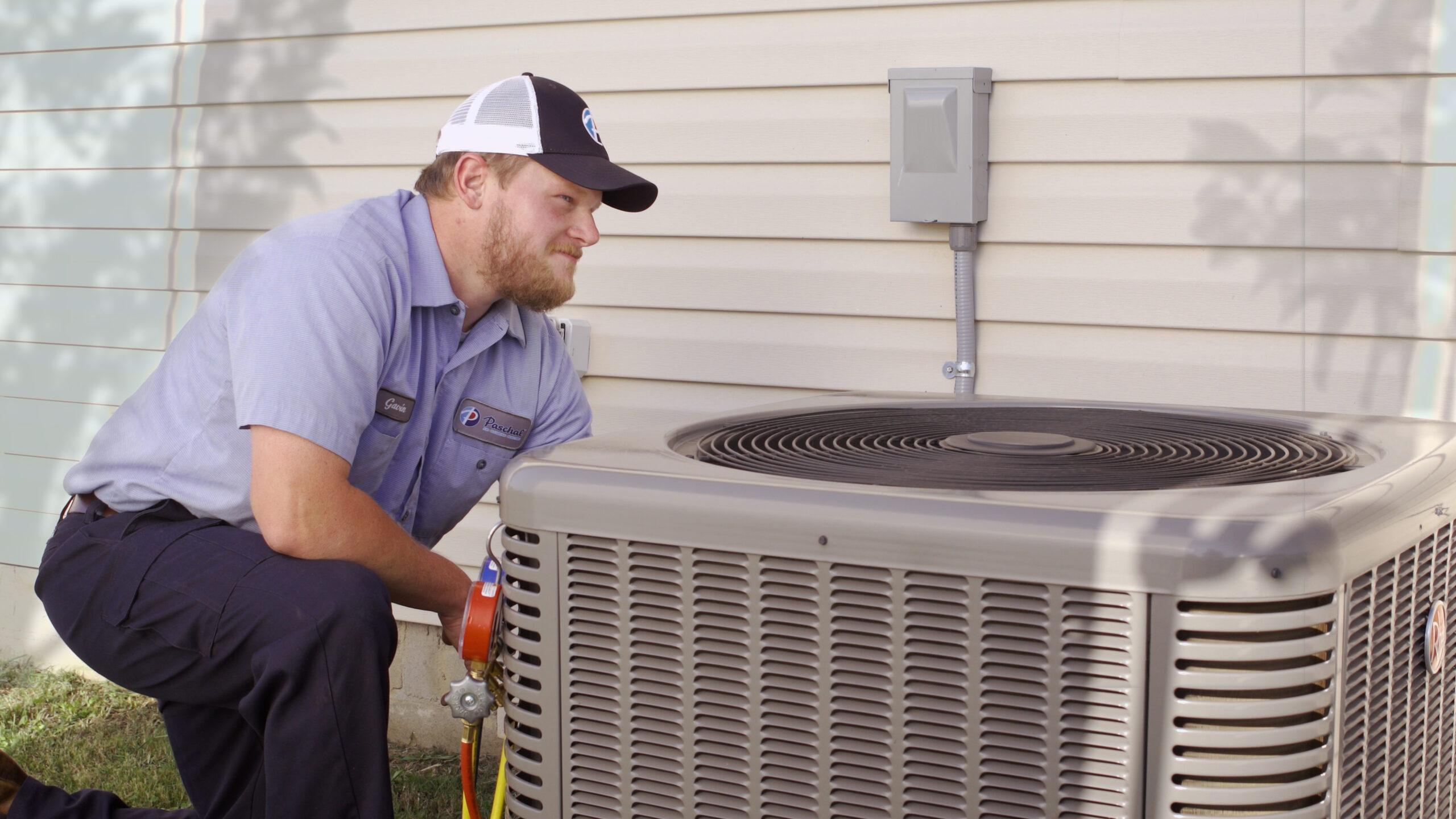Want to save with Paschal? Don’t miss our current offers and specials

Want to save with Paschal? Don’t miss our current offers and specials
Return to Paschal Resource & Education Hub

If you’re comparing PTAC vs Mini-Split vs Central HVAC systems to find the best heating and cooling solution for your home or business, you’ve come to the right place. Each system works differently, installs uniquely, and suits different spaces. This guide will help you understand the key differences so you can make the best choice.

PTAC stands for Packaged Terminal Air Conditioner. These self-contained units are commonly found in hotels, senior living facilities, hospitals, and small apartments. They’re installed through an exterior wall—part of the unit is inside the room, while the rest vents directly outdoors.
Where you’ll find it: Mounted low on an exterior wall, often under a window.
Best for: Individual room temperature control.

Mini-splits consist of an indoor air-handling unit and an outdoor compressor. They’re ductless, making them perfect for spaces without ductwork—like add-ons, garages, or renovated homes. According to the U.S. Department of Energy, mini-splits can also be more energy-efficient than traditional systems because they eliminate duct-related energy losses.
Where you’ll find it: Indoor units are wall-mounted, typically high up; the outdoor compressor sits just outside.
Best for: Zoned comfort and high efficiency in duct-free spaces.

Central HVAC systems use ductwork to distribute heated or cooled air from a central unit throughout your home. Most homes in the U.S. have some version of this setup. The EPA notes that proper maintenance is key to keeping central HVAC efficient and ensuring good indoor air quality.
Where you’ll find it: Equipment is usually hidden (attic, utility closet, or outside). You’ll recognize it by vents in each room.
Best for: Whole-home comfort with consistent temperatures.
Look around the room:
If there’s a large metal box under the window with buttons or knobs, you probably have a PTAC.
If you see a slim, rectangular unit mounted high on the wall (and no vents in the room), it’s likely a mini-split.
If your heating and cooling come through vents and there’s no visible equipment in the room, you probably have central HVAC.
Check the outside of your home:
Mini-splits and central HVAC both have outdoor condenser units. If you see one small unit with a thin pipe running into the house, it’s likely a mini-split.
If you see a large square or rectangular unit that turns on when the thermostat clicks, it’s probably central HVAC.
Paschal services and installs a wide range of heating and cooling systems, including ductless mini-splits, central air conditioners, furnaces, heat pumps, and commercial-grade PTAC units. We do not service or install portable units such as window ACs, space heaters, or plug-in air conditioners.
The best choice depends on your space, comfort needs, and budget:
PTAC: Ideal for single-room solutions or spaces where individual control matters.
Mini-Split: Excellent for zones or homes without ductwork—especially energy-conscious homeowners.
Central HVAC: Great for larger homes needing consistent temperatures across multiple rooms.
Our Paschal experts are ready to help you choose the best HVAC solution for your comfort and budget. Call or text 479-502-9229 to schedule your consultation.